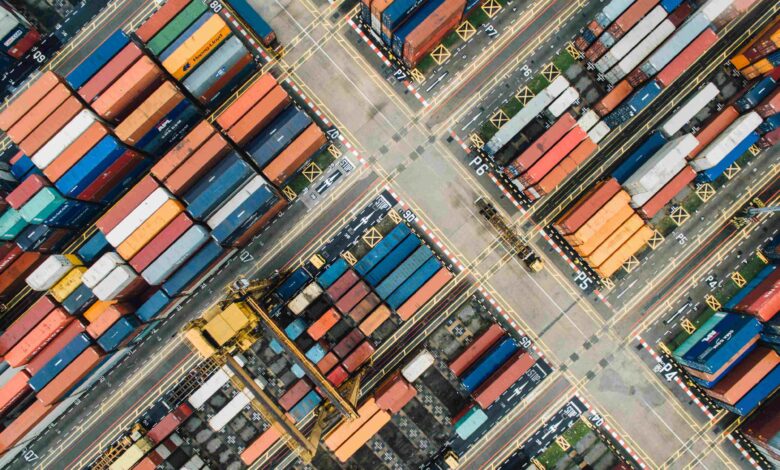
If there was ever a sector that personified the potential of the powerful payload artificial intelligence (AI) can deliver to global business operations, it would have to be in the arena of logistics and supply chain.
Ensuring the circular certainty of ‘right product to the right place at the right time and at the right price’ is no longer an aspiration but an everyday expectation.
Logistics was a term borrowed from the military in the 1980s to create an image of an elevated and cerebral discipline that is all about forensic-focussed supply chain accuracy. Almost overnight it reinvented the sector as a scientific tool to deliver competitive advantage through greater efficiencies and productivity.
Just-in-time delivery (JiD), for example, became the buzzword methodology favoured by retailers and the automotive sector to reduce the costs of stockholding in favour of calling off the product only when it was required for on-shelf availability, or to be attached to a vehicle on a precision production line working around the clock.
Time is money and too many touch points in a supply chain equates to additional costs and inefficiencies. Today’s supply chain optimisation is about lean, mean and green supply chains that sweat the assets of vehicle fleets while reducing millions of miles of ‘empty running,’ the unnecessary journey legs that add cost and carbon to the balance sheet.
Using AI for customs declarations
In my world of seamless customs control, we are utilising AI to streamline border protocols through the optimisation of the declaration process. We have trialled the use of our intelligent document processing (IDP) technology in the UK, and are live in the Netherlands and Belgium. We are now rolling it out across Europe, and we will use the technology to process up to one million declarations a year.
The principle is simple: at the declaration entry point, we use AI to streamline and digitise the traditionally paper-heavy customs clearance process. Our technology scans PDFs, converts them into text, translates them into readable files, identifies trends, and quickly matches multiple lines of customs entries to the applicable forms before passing them to a declarant for verification. Previously, this entire process was completed manually, often from coffee-stained paperwork that had seen better days.
This new process, which we call the ‘Future Declarant,’ will exponentially drive productivity. We are reshaping the declarant profession by reducing the need for manual typing and allowing AI to handle these tasks. This enables declarants to focus their expertise and knowledge on the more complex aspects of customs regulations and trade compliance and apply what we call ‘Real Intelligence’. As these regulations become increasingly complex and dynamic, there is no time to waste on typing.
Supply chain optimisation through the use of AI is not a horizon-gazing aspiration, but a reality in data-driven excellence now and in the future, as it continues to learn and map the road ahead.
How AI is working in supply chains
Automation and sortation have become synonymous with the sector, which is why seeking ways to achieve even greater efficiencies and taking the ‘grunt work’ out of supply chain mapping has put AI in the driving seat. This has created a digital eco-system where machine learning is enabling greater earning potential in a highly-competitive and low-margin sector.
However, this is about more than pick accuracy and cutting-edge robotic high-bay warehousing. AI has found its true calling in revolutionising supply chain optimisation by enhancing decision-making, improving efficiency and mitigating risks through data processing and pattern recognition.
Machine learning of supply chain processes has emboldened AI systems to accurately predict demand, optimise inventory levels and improve logistics performance, all of which are leading to cost savings and increased customer satisfaction.
Specific areas where AI is augmenting supply chains include demand forecasting, where algorithms can better analyse historical sales data, market trends and seasonal patterns to predict future demand with greater accuracy. This allows businesses to optimise inventory levels, reduce waste, and minimise stockouts, all of which ultimately lead to better customer service and increased profitability.
Optimising existing processes using AI
On the road and returning to the earlier point around reducing empty running, AI algorithms can optimise deliveries by factoring in traffic, weather and fuel prices to reduce transportation costs and emissions.
In the warehouse and distribution centres, AI can optimise operations by automating tasks like picking, packing and loading, improving efficiency and reducing labour costs through better resourcing and personnel deployment.
In terms of risk management and early warning signs, AI can help businesses identify and mitigate potential disruptions, such as weather events, political instability or supplier failures to minimise their impact on the supply chain.
Such capability can also provide real-time visibility of the entire supply chain, allowing businesses to better track products, monitor inventory levels and identify potential issues early on, all factors that can lead to better decision-making and more efficient operations.
It is clear the helping hand of AI can significantly enhance efficiencies across various domains, from customs to sustainability. With AI already a vital member of nearly every business team, it’s time to optimise the synergy between artificial and human intelligence. By leveraging this partnership, we can transform our newly-forming team into a high-performing unit.





